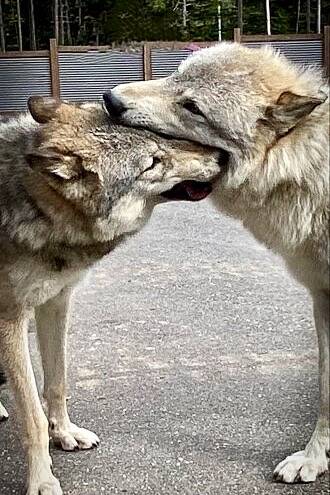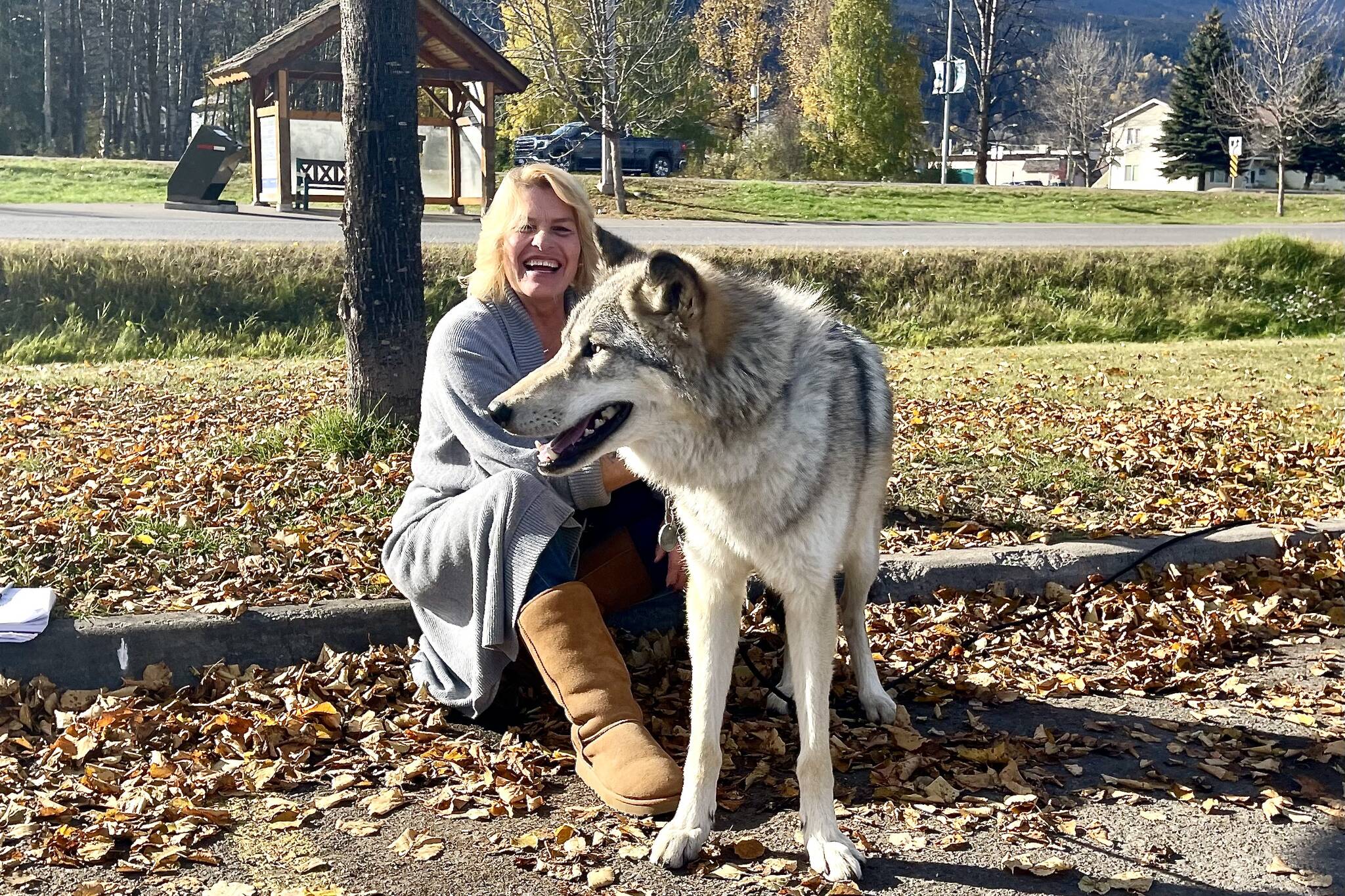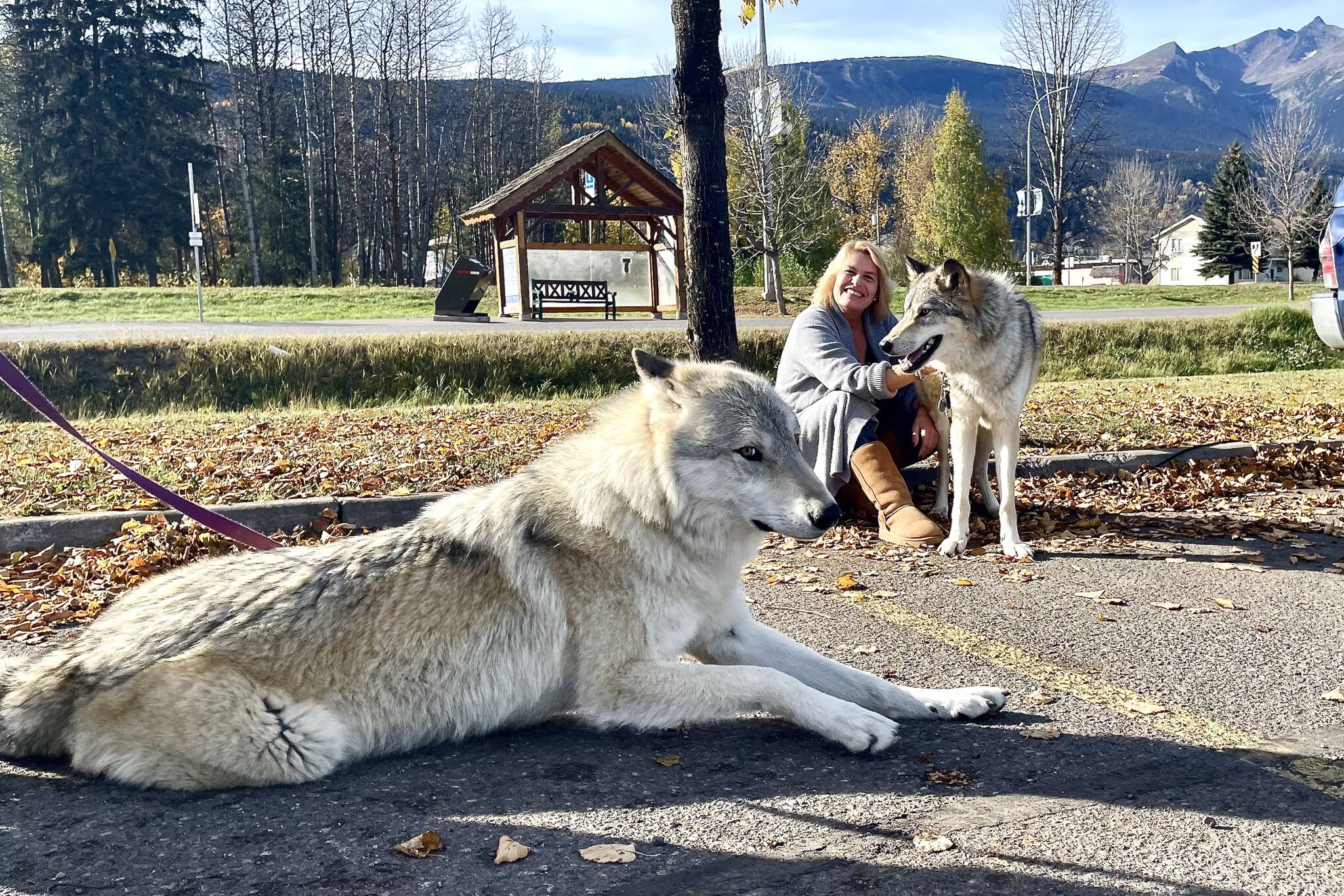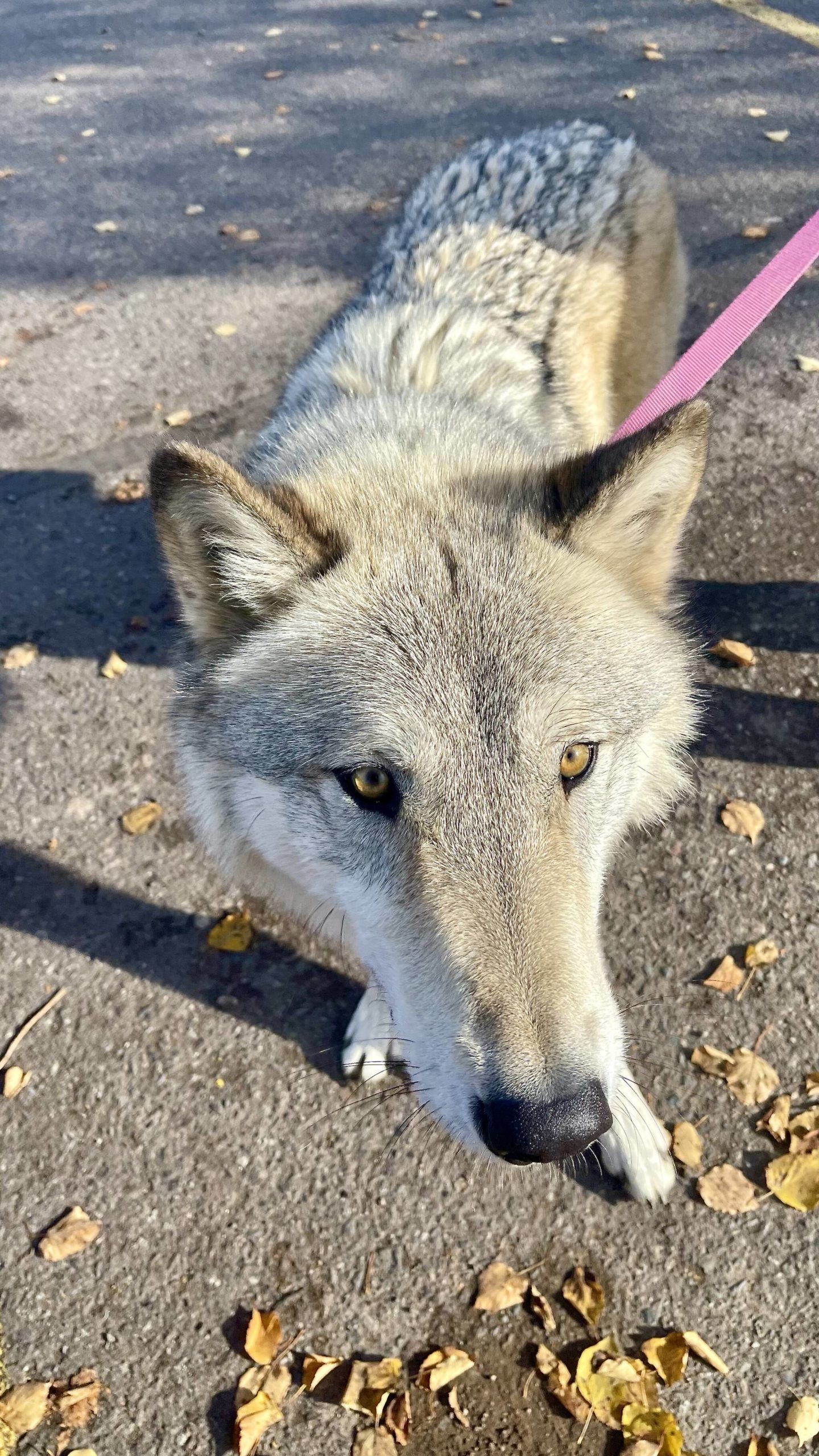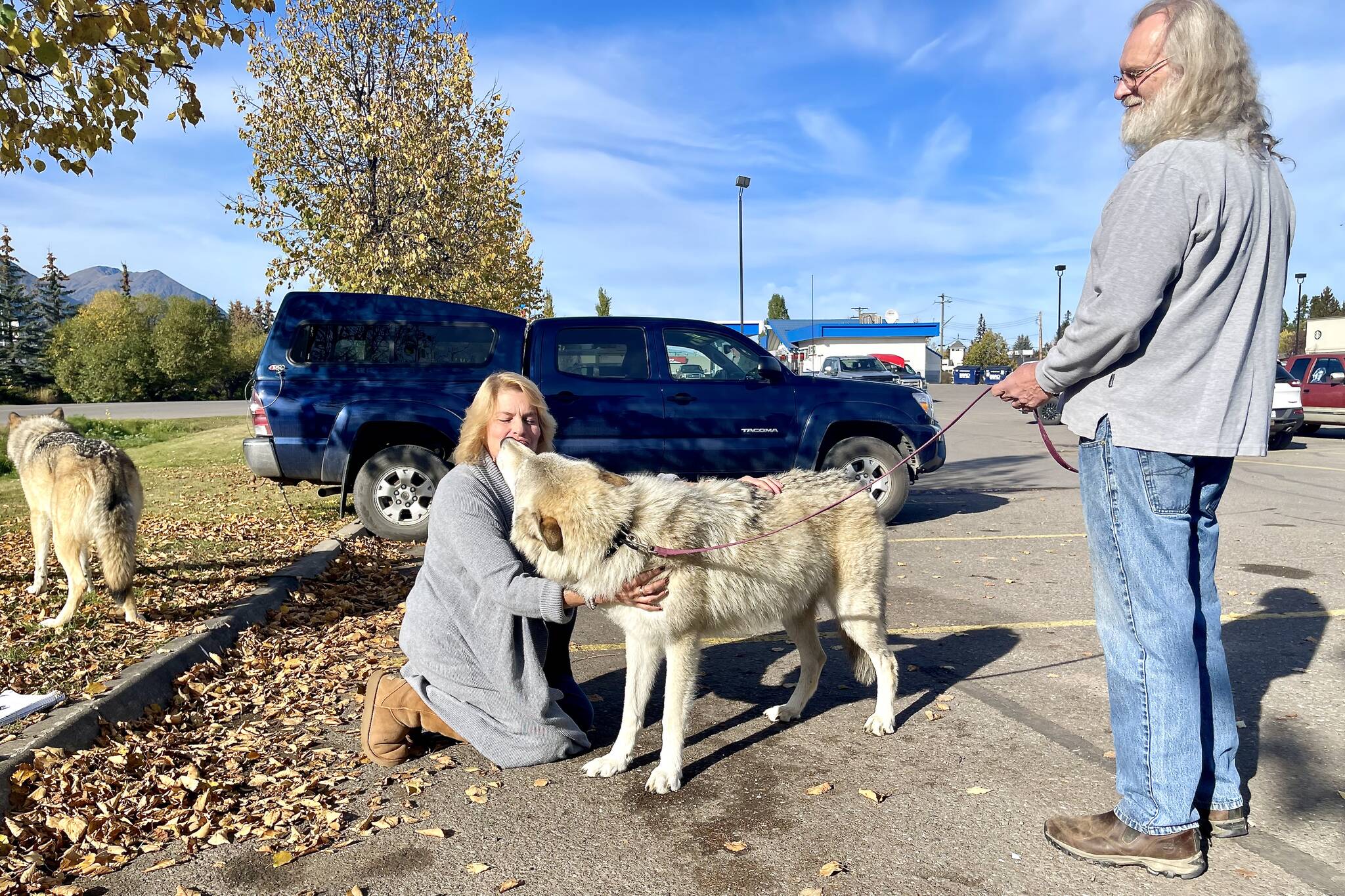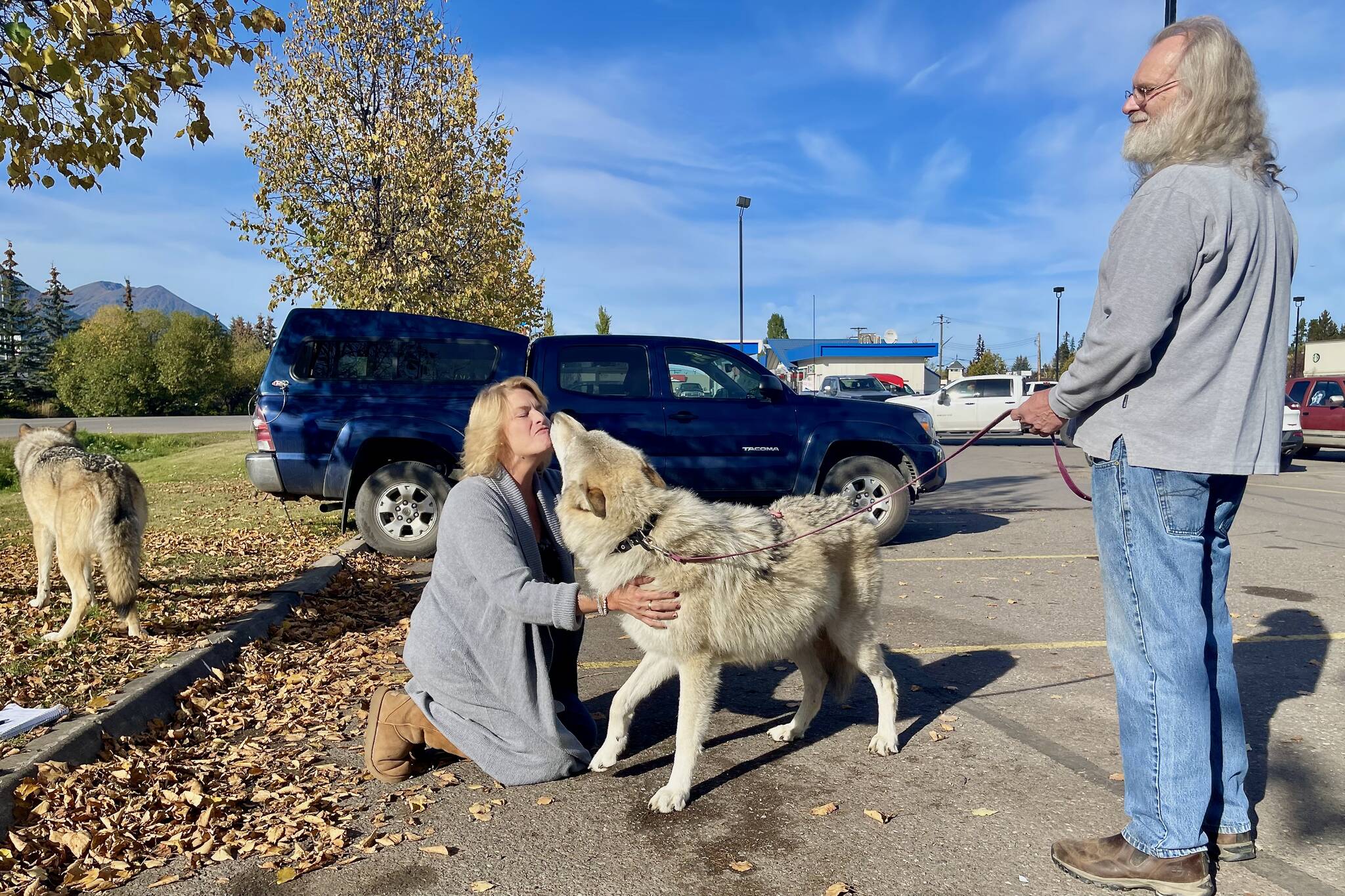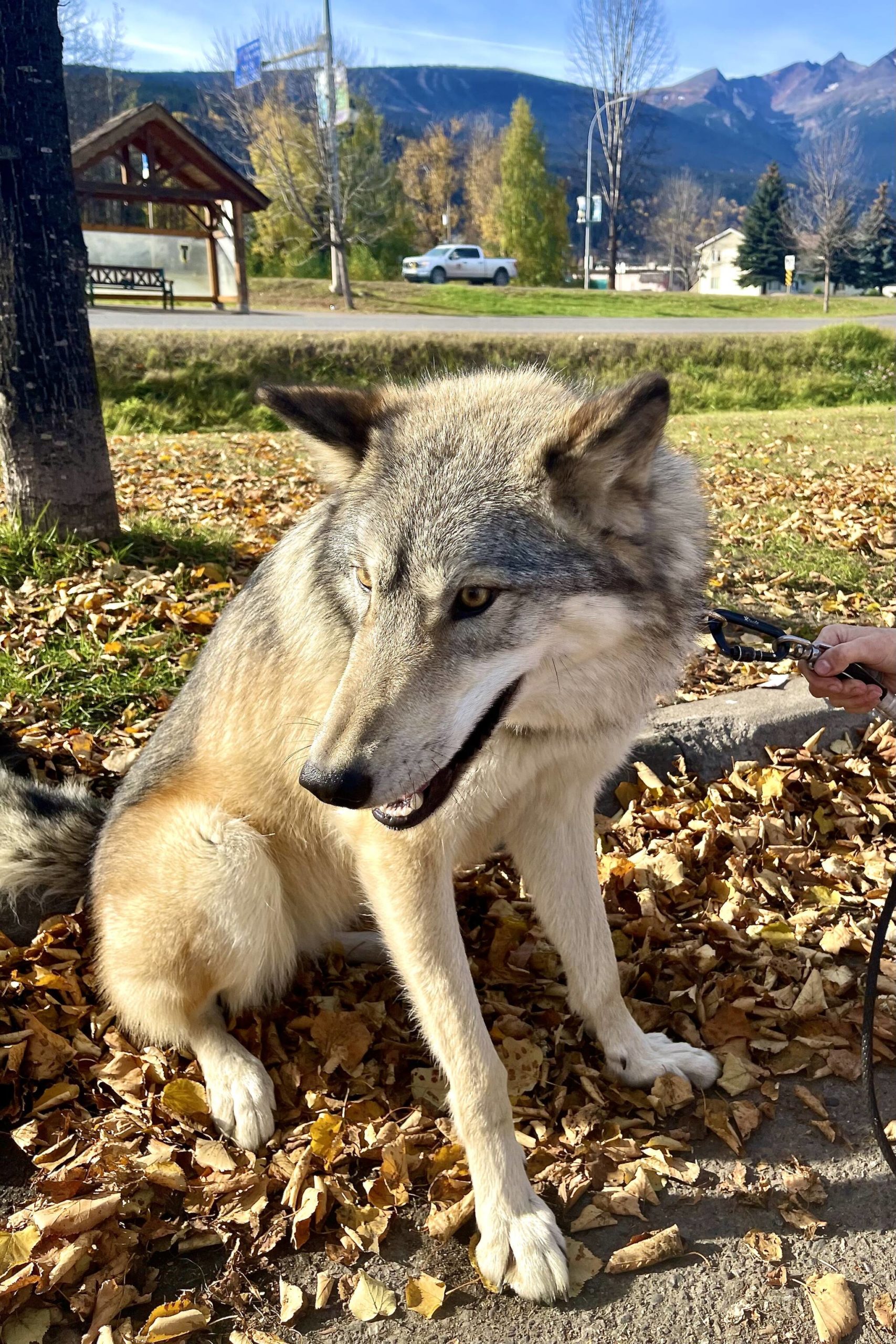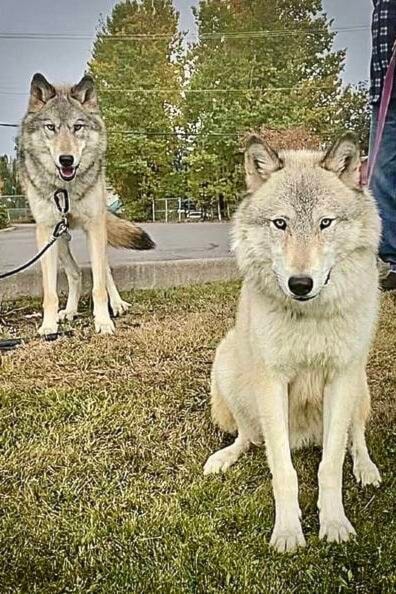Zar and Tallen are half brother and sister, high-content wolfdogs, who are visiting Smithers, November 1, to raise awareness about the wolf cull currently underway in B.C.
Bill Haskell, Zar’s owner, and Delee Dennison, Tallen’s owner, are specially trained handlers of wolfdogs, and have raised the two from pups to be in the public and to educate people that wolves are not the “big bad wolves,” of the storybook tales.
“They are highly intelligent, magnificent animals, revered in many cultures, who are being killed in horrible ways like aerial shooting, and poisoned with strychnine, because of the mismanagement of the land base by governments and man,” Haskell explained.
“They (Land, Water and Resource Stewartship Ministry), are collaring with GPS trackers the wolf mothers to track and follow them to their dens and poison the pups with strychnine. It is cruel and harms many more creatures in the ecosystem with poisons,” said Dennison.
“Wolves are beautiful, they are highly social and loving within their packs, they are very intelligent and are going where man has made it easier to hunt,” Haskell added.
B.C. quietly renewed plans to continue a controversial wolf cull for another five years, intended to protect declining caribou populations last January. The decision came despite a government survey, where a majority of people in B.C., told the province they did not agree with the program.
Since 2015, hundreds of B.C. wolves have been killed as part of the government cull, which involves aerial shooting of the animals from helicopters. According to a government report from 2021, 237 wolves were killed last winter.
A 2019 South Peace Caribou Recovery-Wolf Reduction report said declines of caribou, “followed extensive landscape change resulting from forest harvest, mining, oil and gas exploration, road construction and other industrial activities within or adjacent to caribou ranges. This has led to the direct loss of habitat and altered predator-prey dynamics.”
The report stated the type of forest created by industrial activities benefited species such as moose, which attract wolves. Linear features, such as roads, can also enhance wolf movement and access to prey.
READ MORE: Statistical flaws led to B.C. wolf cull which didn’t save endangered caribou as estimated
Conservation advisor for Pacific Wild Ian McAllister said the province revealed the cull extension last January, in a video meeting with stakeholders.
“It really is a war on wolves,” he said. “They get blamed for everything. They get scapegoated for everything, and it’s our opinion that it’s undeserved.”
“I honestly think they’re quite tone deaf to the amount of people that are really outraged by the killing of wolves, the taxpayer-funded killing of wolves, in this province.”
“The province keeps saying this is a short-term measure but forest ecologists, government and non-government scientists have been warning about the plight of endangered caribou herds for decades, over thirty years. And we’ve been waiting for the province to take substantive steps to protect critical habitat.”
The Union of BC Indian Chiefs (UBCIC) has called for an end to the wolf cull program immediately, stating that “[Wolves] are a sacred species that Indigenous peoples have coexisted with since time immemorial. Habitat destruction, not wolves, are responsible for the decline in caribou species.”
In early 2021, the BC SPCA asked the Canadian public to sign the federal e-petition 3047 to end the use of strychnine, Compound 1080, and sodium cyanide for killing wolves, bears, coyotes, and other large vertebrates.
Zar and Tallen be meeting with people at the back of the Safeway parking lot, along Frontage Road in Smithers on Nov., 1 at 1 p.m. Those planning to attend should bring a camera, and, as with any animal, ask the handlers to approach.
deb.meissner@interior-news.com
Like us on Facebook and follow us on Twitter
